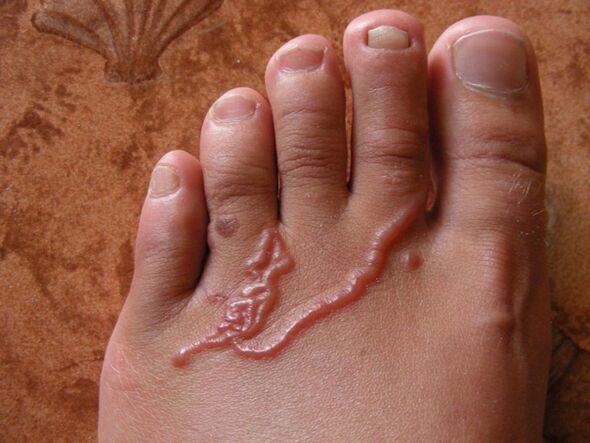
There are many protozoa that can only exist in a host. For most of them, the primary vehicle is people. These organisms have infiltrated the human body and can live anywhere, but subcutaneous parasites are thought to be the most common. It is they who bring the most unpleasant moments, including the development of complications, and it is therefore necessary to consult a doctor at the first signs of infection.
Types of parasites that live under the skin
The simplest primary carrier is the person, which is divided into two categories:
- skin
- subcutaneous.
The first includes the following insects: lice, fleas, bed bugs. They live on human hair and skin, feed on human blood, and can carry a variety of dangerous diseases. However, skin parasites are considered less dangerous than subcutaneous parasites. The latter live in human skin and not only feed on its cells, but also reproduce their offspring in it. Therefore, dealing with human skin parasites is much more difficult than dealing with skin parasites.
Many protozoa and worms live under the human skin, which can lead to the development of various diseases, such as:
- Filariasis
- Dracunculiasis
- Schistosomiasis
- foot and mouth disease
- cysticercosis
- scabies.
Most unpleasantly, it is often difficult to make a correct diagnosis because the symptoms of such diseases often resemble a normal allergic reaction. Therefore, it takes a long time to treat skin diseases.
To give you an idea of what subcutaneous parasites a person might have and how it might manifest, consider the signs of infection with each of the above.
Filariasis
This species does not live in our country, but is easily infected when visiting Africa, South America and Asia. Infection occurs when a person is bitten by a blood-sucking insect, such as a mosquito. As for the incubation period, this skin disease can reach 7 years.
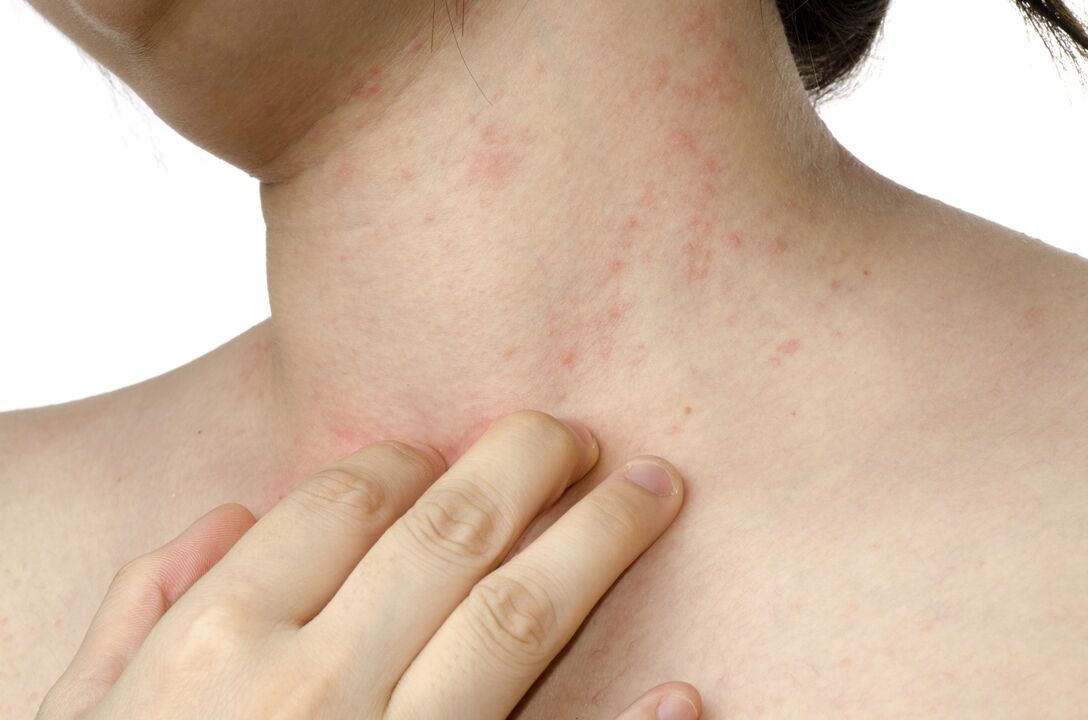
The initial symptoms of this parasitic skin disease are usually mild fever and hives, and are often overlooked.
It only starts to appear after a few years on the skin:
- ulcer
- wart
- nodule
- papules.
Eczema may develop over time. In some cases, they may be accompanied by mild discomfort, headache, and fever, which allows us to conclude that the patient has filariasis. The disease is caused by filamentous nematodes.
But if action is not taken in time, parasitic skin diseases can lead to complications such as joint disease and vision problems.
Using mosquito repellent can help avoid infection. By treating open areas of your skin with it to protect yourself from blood-sucking insect bites, you will protect yourself from filariasis.
Dracunculiasis
The disease is caused by the round subcutaneous worm - Guinea worm. Adult worms of these parasites living under the skin of humans can reach lengths of more than a meter. A peculiarity of this species is that not only humans can serve as their carrier, but also domestic animals: cats, dogs. These parasites are most commonly found in Central Asia.
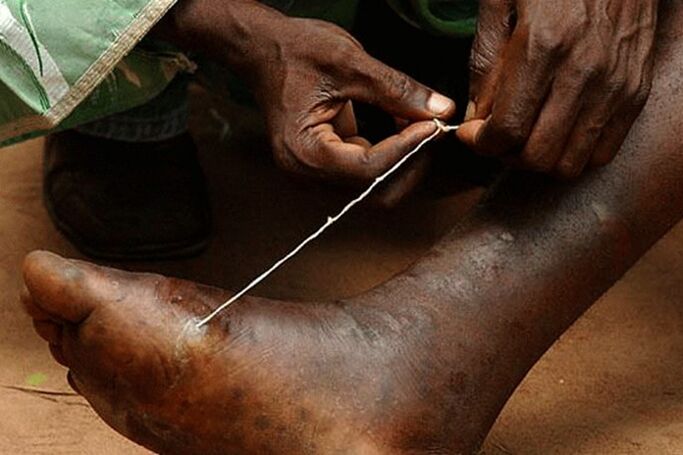
Guinea worm larvae enter the human body by eating raw, untreated water. After 2 weeks, they begin to pass through the body of the carrier, and after 1. 5 months, they penetrate into the subcutaneous area. The larvae take a year to develop into adults.
Symptoms of rishta infection are difficult to confuse with another disease. Initially, a thin, swollen area that resembles a small lace appears on the skin in the leg area. A bubble then forms in its place and inside is the worm's egg. When water enters, it bursts, making it possible for new larvae to enter the environment.
If you don't start treating the disease in time, complications can come in the form of:
- joint inflammation
- gangrene
- Sepsis, which is caused by an abscess that forms on the skin.
As for the fight against this human skin parasite, it lies in its removal from the skin tissue. Also, if a large individual is parasitizing the patient, the process can take several days. The only condition is not to break the worm.
To avoid dracunculiasis, you must drink only disinfected water and do not swim in open water.
Schistosomiasis
The disease is also caused by worms. They live in Asian and African waters, so swimming in them puts you at risk of infection. This worm species lives not only on human skin, but also in the urogenital organs. In the initial stages of development, the disease manifests as a rash, itching, dermatitis. Signs of kidney damage will appear in the future, and the liver may increase.
The disease is treated with antimony-based drugs. But it's best to follow simple rules to avoid infection: Avoid bathing in stagnant water and use only boiled water.
foot and mouth disease
These parasites get under the skin through cracks in the soles of the feet or wounds elsewhere in the body. But mostly, they still affect the lower extremities and stay there without migrating through the body.
Ankylosis presents with the following symptoms:
- intense itching where the parasite is located;
- skin changes;
- The appearance of anemia.
The most unpleasant thing about infection is that the treatment of this disease is very difficult and positive results are not always possible.
cysticercosis
Tapeworm larvae can also live under the skin of humans. The main habitat of these parasites in the human body is the gut, where they enter the body through worm-infected food or water. However, it is not uncommon for them to develop under the skin, where they can live for years.
Symptoms of infection with cysticercosis are swelling and tumors where the parasite enters. They will thicken over time. In rare cases, the infection may be accompanied by hives.
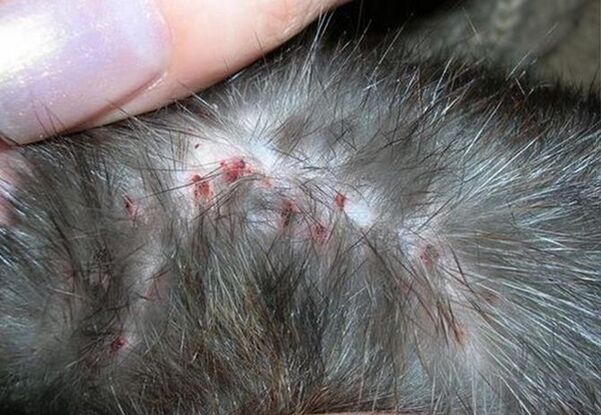
The only way to get rid of them is to surgically intervene in the complex and take antiparasitic drugs.
scabies
Today, the disease is very rare, but in fact 50 years ago it was one of the most common diseases caused by parasites. Its appearance is caused by penetration under the skin of a person the size of a tiny scabies mite. Also, he prefers to settle in the deeper layers of the skin, where he feeds on the epidermis and lays eggs in it.
The lifespan of an adult does not exceed two months. But during this time, the female managed to lay more than a dozen eggs. Most often, ticks affect the hands, folds, armpits, and soles of the feet. But it can also be found on the breasts and genitals.
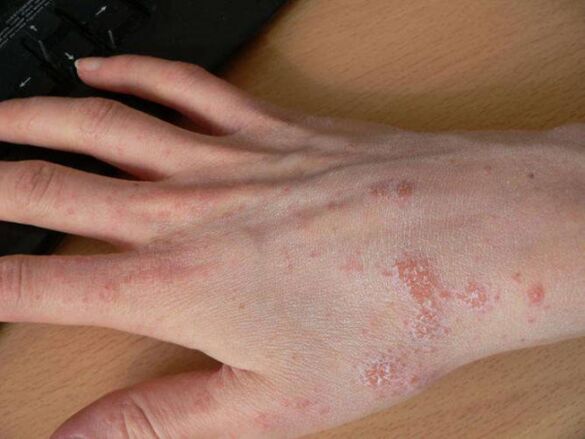
Infection with this parasite can lead to the development of scabies, which is determined by visible signs such as clearly visible passages, scabs at the site of scratching, rash, itching, intensification at night. If left untreated, scabies can lead to the development of dermatitis and eczema that worsen in the fall.
The disease is treated with sulfuric acid ointment or hydrochloric acid solution and sulfuric acid soap. For extensive lesions, antibiotics may be prescribed. But to avoid reinfection, the patient's sheets and clothing need to be boiled and ironed on both sides with a hot iron. So it's easier to pay attention to personal hygiene and avoid contact with infected people - which will help you not get sick.
Differential diagnosis of subcutaneous parasites
In most cases, you can visually determine if a person is infected. However, patients are assigned tests that will more accurately help determine the location of lesions and the number of parasites.
Diagnosis of parasitic skin diseases:
- Scrape and smear from the mucosa;
- A blood test for the presence of antibodies in it.
And only after all the results have been received, the doctor can determine a treatment plan and prescribe medication that will destroy the parasite.
Treatment depends on the type of disease. In some cases, surgery may even be required. But in most cases, it is possible to use a variety of drugs.
prevent disease
Since it can take years to clear some types of worms from the human body, it is easier to prevent parasitic skin diseases. To do this, avoid drinking raw water, undercooked meat, and close contact with infected people.



































